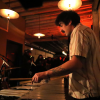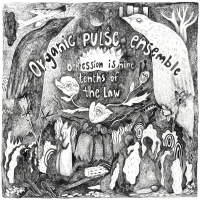Home » Jazz Articles » Live Review » Tony Bennett Opens Kimmel Center Mellon Jazz Festival Season
Tony Bennett Opens Kimmel Center Mellon Jazz Festival Season
[Bennett's] wonderful personality quickly put the audience at ease, and he ... [wove] a tapestry of moods and memories that has been a part of so many people
It so happens that, like the late great Sinatra, Bennett has desired very much to earn his stripes as a jazz artist. In reality, he has already earned them. Both he and Sinatra have contributed enormously to jazz. Musically, both of them early on demonstrated abilities and originality well above those of the average pop singer. Sinatra literally brought vocals out of the stone age of stilted, postured phrasing. He created the modern style of singing standards: the swinging rhythm, the held-back phrases, the relaxed, intimate persona. Bennett added elements of intuition, subtle, private emotion, and sincerity that have similarly exercised a profound influence on contemporary song stylings. In addition to being creative forces of their own, both have coveted performing with the best of jazz musicians. Both have recorded and performed live with the Basie band. For a while, Sinatra had a musical love affair with Antonio Carlos Jobim. Back further, during the 1950's, Sinatra went on tour with Red Norvo's quintet, and, if the recording (Frank Sinatra with The Red Norvo Quintet: Live in Australia, 1959; Blue Note CDP 527513) of a concert date in Australia is any indication, he sang with superlative swing and nuanced phrasing well beyond his popular renditions. Bennett made two well-respected recordings with pianist Bill Evans, and a high-tech CD of "duets with Billie Holiday, using digitally modified versions of her recordings. The Billie Holiday influence comes through whenever Bennett sings ballads. He stays strictly, as Billie did, almost "religiously with the melody and the sentiment "as written. Understatement can be a powerful medium of expression.
This provides some of the historical context for Bennett's lustrous performance as the kick-off artist for the Kimmel Center's Mellon Jazz Festival concert season. Recently, Bennett has been consciously striving to bring his jazz interests into conjunction with his popular stylings, and is doing a tour of concerts with jazz "overtones, so to speak, at high level venues. In this particularly stunning performance at the Kimmel, with a possible nod to the famous Palladium concerts of Judy Garland and others, Bennett combined nostalgic performances of his hit tunes (such as "I Left My Heart in San Francisco and "Fly Me to the Moon ) with more delicate renditions of jazz standards (such as "I'll Be Seeing You in All the Old Familiar Places and Ellington's "In a Mellow Tone ) into a seamless, wide-ranging set of interpretations. His wonderful personality quickly put the audience at ease, and he added genuinely interesting and humorous anecdotes and quips, and a perhaps too-well-choreographed set of stage movements to weave a tapestry of moods and memories that has been a part of so many people's lives over five decades. And it was all held together by Bennett's superb sense of rhythm and dynamics. Musically and personally, he built such rapport with the audience that they kept calling him back with standing ovations for encore after encore. It was, I think, a combination of the excellent performances by him and his sidemen, the nostalgic significance of the occasion, and Bennett's manifest love of life and generosity of spirit that generated such energy.
But, given that this was billed unflinchingly as a jazz concert and despite Bennett's artistry and the sheer wonder of his performance, the question still posed itself: was it really "jazz? On one level, this is a very academic question, for, after all, jazz and American popular music have always existed in a virtually inseparable relationship. (Think of Louis Armstrong, George and Ira Gershwin, Cole Porter, Johnny Mercer, and Duke Ellington, for example.) Yet a genuine distinction remains. A popular song or a standard is one that has insinuated itself into the general culture. Jazz comes about when a melody or a motif (often but not always a popular one) is transformed in depth and meaning by a creative process and especially when linked to the blues and other jazz formats.
Did Bennett achieve this transformational process in a significant way? The answer has to be a complicated "yes and no. He made some limited efforts to "gesture towards jazz: some scat singing here and there, and liberally giving his sidemen opportunities to solo. Many of his vocal renderings were well-modulated and masterful. And he sang with great feeling. But these qualities are not enough to qualify as transformational. Transformation means that the music itself has to change (through interpretation and improvisation) as it simultaneously changes the listener. In this respect, a measure of redemption was his. I noticed it particularly in the very slowly done ballad standards. There was a haunting quality, an expression of soulfulness, and an interpretive level that was indeed transformative both of the music and the listener. It was at those defining moments that Bennett earned the stripes that he really didn't need to earn, that he had already garnered through his stylistic contributions. When he could get away a bit from his audience and go more within himself, he really found another dimension of expression. The Tony Bennett of the popular culture, of the platinum disks, of the casino circuit seemed to vanish into the background, and something of the eternal and the true jazz syntax emerged in his voice. I would like to hear more of that voice. It is sometimes called "prayer.
Personnel
Tony Bennett: vocals; Lee Musiker: piano and music director; Harold Jones: drums; Paul Langosch: bass; Gray Sargent: guitar.Tags
PREVIOUS / NEXT
Support All About Jazz
 All About Jazz has been a pillar of jazz since 1995, championing it as an art form and, more importantly, supporting the musicians who make it. Our enduring commitment has made "AAJ" one of the most culturally important websites of its kind, read by hundreds of thousands of fans, musicians and industry figures every month.
All About Jazz has been a pillar of jazz since 1995, championing it as an art form and, more importantly, supporting the musicians who make it. Our enduring commitment has made "AAJ" one of the most culturally important websites of its kind, read by hundreds of thousands of fans, musicians and industry figures every month.
Go Ad Free!
To maintain our platform while developing new means to foster jazz discovery and connectivity, we need your help. You can become a sustaining member for as little as $20 and in return, we'll immediately hide those pesky ads plus provide access to future articles for a full year. This winning combination vastly improves your AAJ experience and allow us to vigorously build on the pioneering work we first started in 1995. So enjoy an ad-free AAJ experience and help us remain a positive beacon for jazz by making a donation today.Near
Philadelphia Concerts
Jan
14
Wed
Stream



























